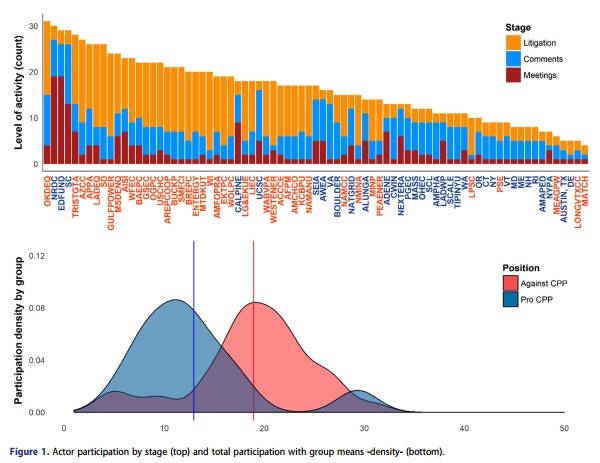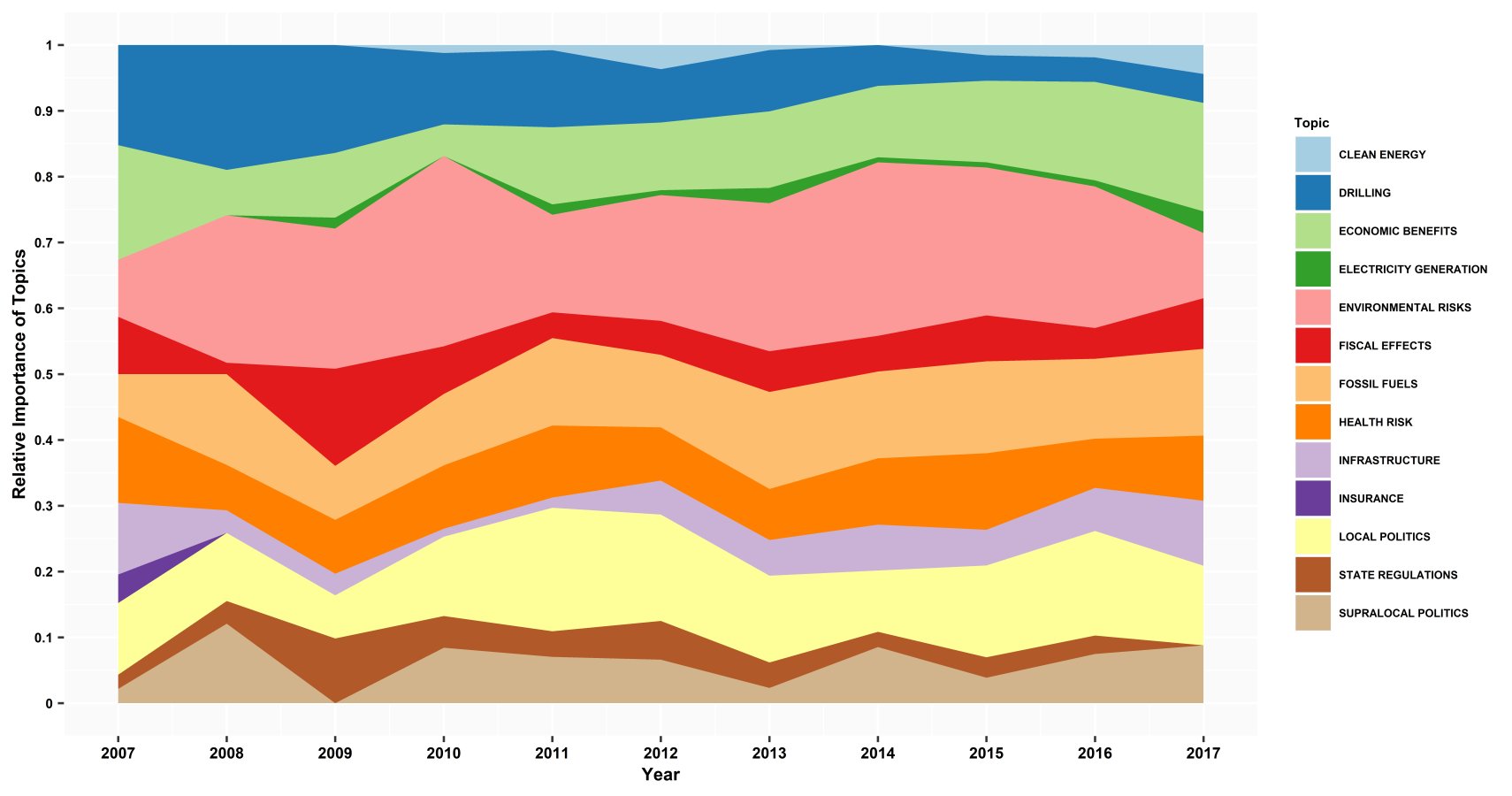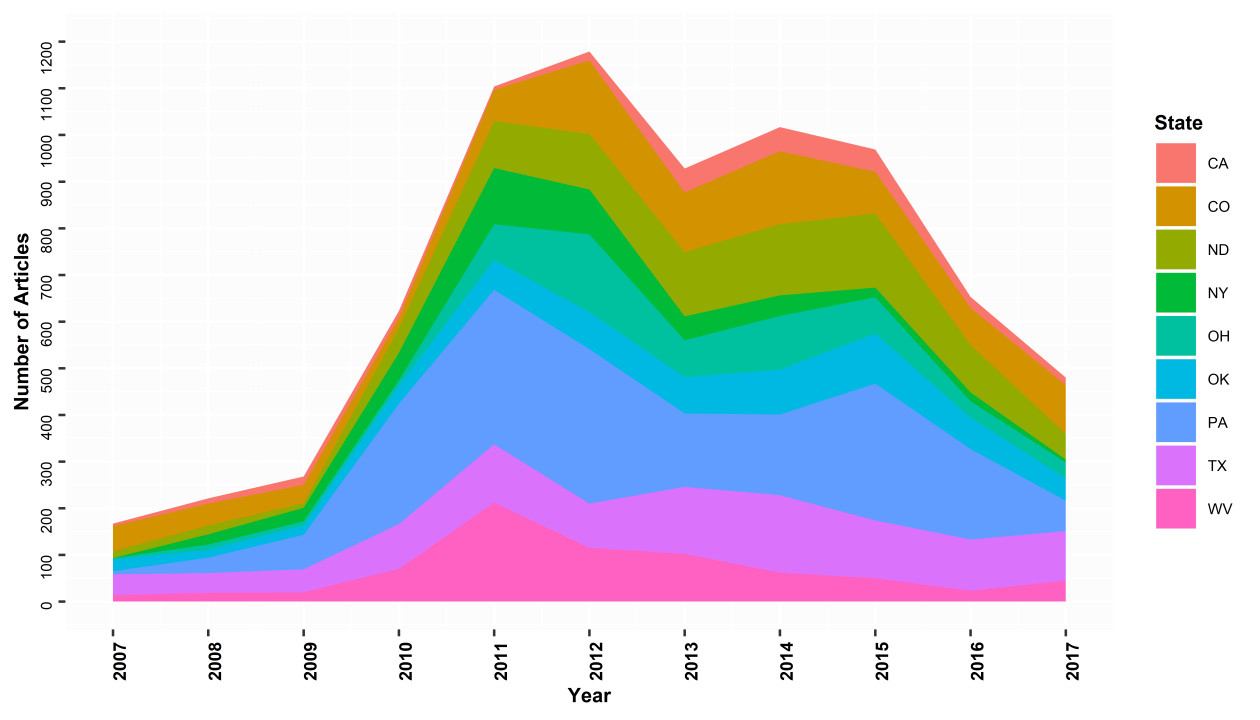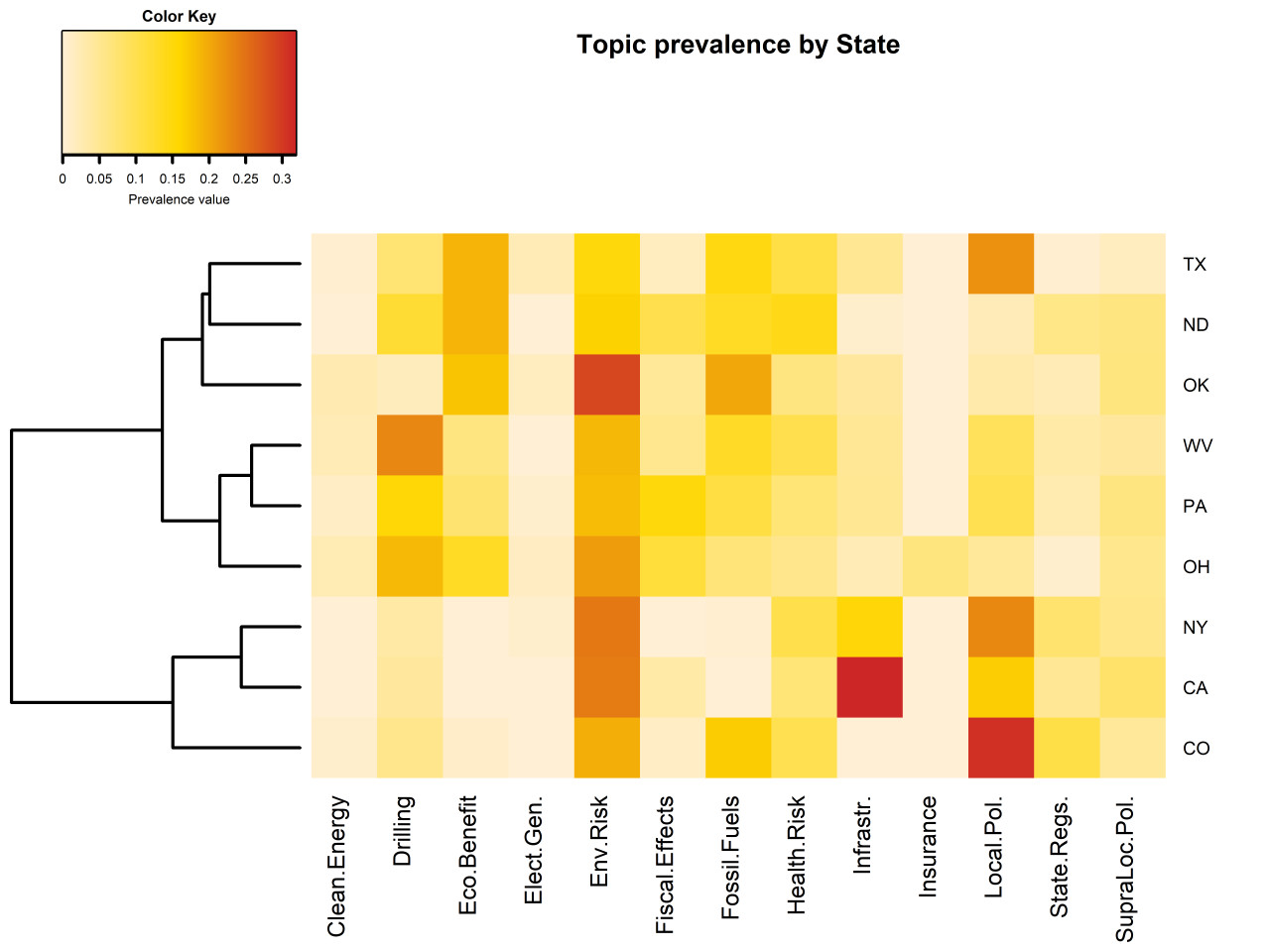Climate Change Regulations Past and ongoing research
My research is largely dedicated to building theory, applying innovative methods, and generating practical knowledge to address outstanding puzzles of governance in environmental policy issues. One key area of my work entails social network analysis to study policy stakeholder coordination related to climate regulatory policy in the United States. For example, my two co-led articles published in Climate Policy and Review of Policy Research use inferential network modelling and simulations to provide important insights with respect to the strategies of pro and anti-climate change actors when participating in the development of federal regulations. This research builds on the existing body of work by offering a comprehensive picture of coordination and collaboration on climate regulatory efforts in the U.S. This work retains considerable value given our efforts to systematically leverage publicly available data to analyze how key stakeholders participate and aim to individually and collective influence the U.S. EPA decision-making process.
Network of policy actors supporting regulations to curb greenhouse gas emissions. Highlighted nodes participated in more than one regulatory process. Out of the 97 actors participating in the pro-regulation coalition, 18 (18.56%) were active in more than one regulatory process. The majority of actors in this group are state governments (n = 12), but we also see environmental NGOs (n = 4) and local governments (n = 2). Moreover, 11 of these 18 actors participated in litigation processes in all three rules.
This “pro-regulation coalitional core” is comprised of eight state governments (West Coast and Northeastern states) and three major environmental NGOs: Sierra Club, Natural Resources Defense Council (NRDC), and Environmental Defense Fund (EDF). Source: Holm, F. & Berardo, R. (2020). Coalitional Architecture of Climate Change Litigation Networks in the U.S. Review of Policy Research.
Network for antiregulatory actors, and again, the nodes are colored based on their participation. The number of actors involved in more than one regulatory process is similar as the pro-regulatory side, but they represent a marginal proportion of the totality of antiregulatory actors.
From the 354 stakeholders involved in the anti-regulation coalition, only 19 participated in more than one process (8.19%). A majority of them are state governments (13), followed by industry groups (5) and one think tank. All industry groups are professional associations such as the American Petroleum Institute, the National Oilseed Processors Association, or the Utility Air Regulatory Group. In contrast to what we observed among actors in the pro-regulation coalition, not a single actor from the anti-regulation coalition was involved in the litigation processes in all three rules. Source: Holm, F., & Berardo, R. (2020). Coalitional Architecture of Climate Change Litigation Networks in the United States. Review of Policy Research, 37(6), 797-822.
Key insights: we find meaningful differences in the collective strategies of anti- and pro-regulation groups on the number of stakeholders and cosigned actions, cross‐regulatory participation, clustering, and subcoalitional homophily. The differences reflect a combination of a narrow structure of interests, pondering losses more than gains, and a higher perception of risk of defection from the agency crafting the regulation (i.e., developing a rule noxious to their interests).
Among opponents, highly similar and densely connected and organized subcoalitions are the norm. Coal‐related companies, rural and small-scale utilities (86!), Republican‐governed states and conservative think tanks form communities that are incredibly homogeneous. Not surprisingly, all these think tanks that litigate together receive SUBSTANTIAL funding from the Koch brothers… the climate denial machine is everywhere. Numerous tight groups with very little cross-regulatory involvement are characteristic of the anti-reg. coalition. These actors also depict strikingly high levels of clustering (overall) and reinforcement within subgroups. We find a consistent pro-environment coalition of powerful actors (states, cities, national NGOs) that consistently bridges across regulations, behavior that is almost completely absent in the case of the anti-regulation coalition.They also tend to form more diverse, less clustered groups when signing documents submitted to the court.
Reach out to me at fholm [at] umich [dot] edu if you’re interested in a copy of the study (if you face a paywall, I’m more that happy to provide a pdf version of the article!), replications materials (code or data), or if you find this useful in any way.
This work complements past research done on policy actors’ behavior and motivations when participating in multiple stages of the rule-making process.

The histogram in the top panel in the figure shows the level of participation of stakeholders through the process, with the y-axis indicating ‘units’ of participation across the stages. The bottom portion of the bar indicates number of meetings attended by the stakeholder, the middle portion of the bar shows the number of comment-related variables for which the actor had a value of 1 (i.e. made an explicit statement about the variable), and the top portion shows the number of litigation actions in which the stakeholders is involved. The bottom panel in the figure shows two density curves for ‘pro’ and ‘anti-CPP’ stakeholders (left and right curve, respectively). The x-axis represents the level of activity in the process as count of ‘units’ of participation.
Those opposing the rule are more active throughout the process, and tend to be especially active during the litigation stage (i.e., they see litigation as the best tool for defending their interests). Source: Berardo, R. & Holm, F. (2018): The participation of core stakeholders in the design of, and challenges to, the US Clean Power Plan, Climate Policy.
Results show noticeable differences in the drivers of litigation in support of, and in opposition to, the CPP. Despite the fact that ‘anti-CPP’ stakeholders participated in fewer meetings to discuss the rule, as shown in Figure 1, their joint participation in the meetings has a statistically significant effect over their likelihood of jointly litigating against the rule (dependent variable). The first coefficient in the ‘Against CPP’ columns in Table 1 shows that increasing the number of jointly attended meetings by members of an ‘anti-CPP’ dyad by one produces, on average, an increase of almost one joint litigation action (0.787) involving both members of the dyad. This positive relationship between joint attendance at meetings and joint litigation efforts does not exist among ‘pro-CPP’ stakeholders. In other words, while supporters of the rule were more active in meetings on an individual basis, joint participation in meetings does not have an impact on joint litigation efforts in support of the rule. This is an important difference because it shows that opponents to the CPP may be able to better self-organize as an advocacy coalition operating more monolithically across different stages of the rulemaking process.
Key insights: the design of the Clean Power Plan (CPP) was a long and contentious process in which ‘Pro’ and ‘Anti-CPP’ coalitions operated to support and undermine the rule, respectively. ‘Pro-CPP’ stakeholders were more active in meetings organized to discuss the CPP with EPA staff, and in submitting written comments. ‘Anti-CPP’ stakeholders were more active during litigation, in response to perceived EPA overreach in designing the rule and negative financial impacts on states’ economies. Joint participation by ‘Anti-CPP’ stakeholders in meetings conveyed by the EPA to discuss the potential content of the rule helps explain their joint litigation efforts, which hints at their considerable capacity to self-organize as a coalition throughout the process. Source: Berardo, R. & Holm, F. (2018): The participation of core stakeholders in the design of, and challenges to, the US Clean Power Plan, Climate Policy.
Reach out to me at fholm [at] umich [dot] edu if you’re interested in a copy of the study (if you face a paywall, I’m more that happy to provide a pdf version of the article!), replications materials (code or data), or if you find this useful in any way.
Energy and Fracking Past and ongoing research
My research on energy and hydraulic fracturing overlaps with my research on climate change governance. With respect to fracking, my research focuses on state-level data, combining multiple data sources (large-n text data, content analysis, social network data) to develop in-depth understanding of the processes at play. This research is part of a larger research agenda, with ongoing collaboration between faculty and graduate students from CU Denver (PIs: Drs. Tanya Heikkila and Christopher Weible) and Ohio State (PIs: Drs. Ramiro Berardo and Hongtao Yi).
Past research looked into the topics that underlie public debate around hydraulic fracturing covered in newspapers across nine U.S. states over an eleven-year period. In analyzing more than 7000 newspaper articles using Latent Dirichlet Allocation (LDA) modeling, thirteen main topics emerge. While these topics fluctuate over time, their relative frequency and, hence, importance in the discourse remains largely constant. The environmental risks associated with the practice is the topic that receives more attention when all data are aggregated. We find that the frequency of the topics varies by state, and the nature of this variation is associated with the political leanings of the state, with media sources in Republican governed states more likely to report on the economic benefits associated with hydraulic fracturing. Finally, we show how all topics are associated with words that indicate the presence of conflict among stakeholders involved in discussions about the costs and benefits of hydraulic fracturing. In doing so, we describe how the association between topics and conflict varies according to which party governs the state, which provides evidence about the fundamental differences on how parties consider the practice of hydraulic fracturing in the states we study.


The next figure shows a heat map indicating how much media attention each topic garners in each state, averaged across all years in our study. To construct this figure, we built a matrix of states and topics in which each cell has the average topic incidence value, and we used the R package gplot to build the heat map and cluster the states based on their similarity. We established similarity by estimating the Euclidean distance between each pair of states in the matrix (i.e. each vector of values of average topic incidence). This grouping is represented by the dendrogram on the left side of the plot. The heat map allows us to uncover patterns of overlap or differences between states based on how topics predominate in media reporting. Red indicates a topic occurs at a high frequency in a state over the time period whereas light yellow indicates a topic occurs at a low frequency.
Some important insights from this analysis: First, the topic “environmental risks” tends to be prevalent across all states that we study, which is not the case for any of the other topics we identified through our modeling exercise. Environmental concerns related to hydraulic fracturing is usually well covered in media sources, and this is the case even in states where discussions about the economic benefits of hydraulic fracturing tend to receive considerable media attention (North Dakota, Oklahoma, and Texas). Another interesting finding is the clustering of states that emerged via visual inspection of common pockets of colors in Fig. 7 and the clustering via the dendrogram on the left side of it (hint: they match). Whereas all the states emphasize environmental risks, states tend to cluster around commonly emergent topics otherwise. The nine states are clustered in three main groups: 1) West Virginia, Ohio and Pennsylvania, 2) North Dakota, Oklahoma, and Texas, and 3) California, Colorado, and New York. States in the first of these clusters (West Virginia, Ohio, and Pennsylvania) tend to give high coverage to drilling as compared to other states. States in the second cluster (North Dakota, Oklahoma, and Texas) tend to emphasize economic benefits as compared to other states. In the third cluster (New York, California, and Colorado), the topic “local politics” is important. This is probably a reflection of the growing importance of debates about the capacity of local governments to regulate hydraulic fracturing and the increased level of action by social movements opposing hydraulic fracturing, which often operate at the local level.




